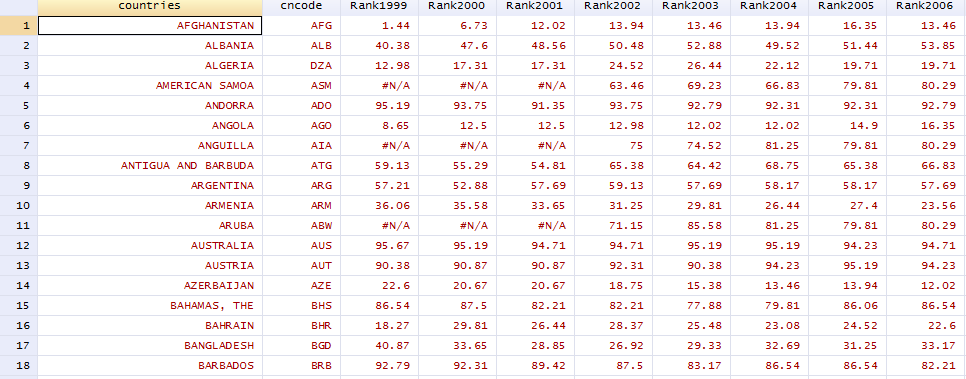

In reshaping long, the "v.names" argument can be provided to rename the resulting varying variables. This argument takes a list of vectors of variable names or indices. With column names that are more difficult for the reshape function to automatically parse, it is sometimes necessary to add the "varying" argument which tells reshape to group particular variables in wide format for the transformation into long format. Now the simple syntax will produce an error about undefined columns. However, this is typically trickier: # remove "." separator in df.wide names for counts and values To reshape long with the current df.wide, a minimal syntax is reshape(df.wide, direction="long") reshape(df, idvar="identifier", timevar="period", direction="wide", In dropping the only non-varying / non-id column from the ame, the v.names argument becomes unnecessary. If the location variable is not necessary, it can be dropped prior to reshaping with the "drop" argument. In reshaping wide, the "v.names" argument specifies the columns that vary over time. Notice that the missing time periods are filled in with NAs. V.names=c("values", "counts"), direction="wide") To reshape the ame to wide format, # reshape wide on time variableĭf.wide <- reshape(df, idvar="identifier", timevar="period", Also, note that there are two variables that vary over the periods: counts and values, and two that do not vary: identifier and location. Note that the ame is unbalanced, that is, unit 2 is missing an observation in the first period, while units 3 and 4 are missing observations in the second period. # create unbalanced longitudinal (panel) data setĭf <- ame(identifier=rep(1:5, each=3), The most flexible base R function for reshaping data is reshape. Using texreg to export models in a paper-ready way.

#Reshape long stata how to
Using pipe assignment in your own package %%: How to ?.String manipulation with stringi package.Standardize analyses by writing standalone R scripts.Reshaping data between long and wide forms.Reading and writing tabular data in plain-text files (CSV, TSV, etc.).Non-standard evaluation and standard evaluation.Network analysis with the igraph package.Implement State Machine Pattern using S4 Class.I/O for geographic data (shapefiles, etc.).I/O for foreign tables (Excel, SAS, SPSS, Stata).Feature Selection in R - Removing Extraneous Features.Extracting and Listing Files in Compressed Archives.Date-time classes (POSIXct and POSIXlt).*apply family of functions (functionals).


 0 kommentar(er)
0 kommentar(er)
